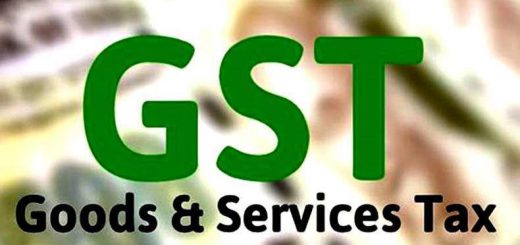Documents Required for GST online Registration in coimbatore
Goods and Services Tax is an indirect tax levied on the sale of goods and services. This tax replaces previous taxes levied such as VAT, Service Tax, etc. GST was launched in July 2017.

We have made it mandatory for all those involve in the sale of goods or services to be register with GST. Registration with GSTN or GST Network is required for both individuals and companies if the annual profit exceeds Rs 40 lakh. This law applies to all the provinces of India except those in the northeast and the hilly regions such as J&K, Himachal Pradesh, and Uttarakhand. The profit margin for these areas is Rs 10 lakh.
Once you have completed the GST online registration, you will receive a unique GST number that can be used for your business activities. This number will allow you to obtain an income tax credit and provide you with a valid ID as a provider
To be able to use all the benefits under GST, one needs to complete the registration with the GST network. Registration can be easily done online.
Documents Required to Complete GST Online Registration
Before you start your online registration, it can be helpful to keep all the required documents close by. The documents required for GST registration vary depending on the type of business you are in.
The standard documents required for GST registration are:
• PAN cards of person / persons or directors of companies
• Proof of Address
• Aadhaar Card
• Bank Account Details
• Partnership Deed (Partnership with LLPs)
• Proof of LLP Registration
• Proof of Nomination Signature (If applicable)
• Certificate of incorporation of the Ministry of Corporate Affairs (Corporate Affairs)
• Memorandum / Organizational Documents
Step-by-step The GST Online Registration Process on the GST portal is as follows:
• Go to the GST portal.
• Under the Services tab, click Subscribe. Click Next for New Registration
• On the new registration page, fill in the required information such as Official Business Name, PAN, Registered Address, etc.
• Click the Continue button to get your OTP.
• After installing the OTP, you will receive a Temporary Reference Number (TRN) which is important in the upcoming registration process.
Registration Process after Receipt of Temporary Reference Number:
- Start the next process with your TRN, install CAPTCHA, and OTP. You will be direct to the GST online registration page
- On the next page, you will need to submit details of your business such as Registered Name, Status of the business registered, Date of registration and start date of business, etc. In this section, you will need to specify if you have an existing subscription.
- In the next step, you provide details of the developers or partners of your business. If it is a sole proprietorship firm, relevant details are required. All personal details, such as Director’s Identification Number, name, PAN, Aadhaar Number are required to be provided.
- Details of the person authorized to file GST returns also need to be submitted.
- In addition, other details such as registered business premises and details such as address, type of place (leased or personal), etc. should be completed. Details of any additional business premises, full details of goods and services. sales, company bank account details, all must be submitted.
- The next step is to upload the required documents. This will vary depending on the type of business you are registering for.
- You’re all done. Now click on ‘Save and continue’.
- After applying, you will need to sign the application digitally.
- The next step will be to click Submit which will store all your information.
- After submitting, your Application Reference Number (ARN) will be sent via email or SMS. This is a confirmation of your GST registration.
So these were simple steps to make your GST registration easier. Once the registration is complete, you can receive a copy of your GST registration at the portal.
GST online registration is very important for the business community. Do not miss your subscription and enjoy the benefits.
Advantages of GST:
1. Eliminates the impact of the flowing tax:
GST is completely natural and designed to eliminate the impact of the decline. The result refers to the tax on the pre-existing tax system when the tax debt was transferred to all stages of the transaction. As a result, the value (value) of the item increases. GST eliminates this diminishing effect as the tax effect is directly related to the cost of goods and services. The tax burden is removed close to the consumer and benefits the industry with better cash flow and cash flow management.
2. Input tax credit:
At the time of payment of import duty, manufacturers or service providers may reduce their tax payable by the amount of tax they have already paid in income. The average tax burden on manufacturers or service providers may decrease. Thus, a lower price may justify further use.
3. Transparency:
GST registration is a transparent tax system where registered retailers will not have any hidden costs and taxes. The cost of doing business will be lower.
4. Tax avoidance:
Installation credit is available to recipients ie manufacturers or service providers only if the information is provided to the supplier on its return. It encourages suppliers of goods and services and thus helps to assess tax evasion.
5. Higher registration limit:
Previous tax regulations required businesses over a profit of more than 5 lakh rupees to pay VAT. The limit was different for different regions. However, the limit has been increased to 20 lakh rupees in the GST government. This means that small retailers and service providers are free.
6. Small business start-up programs:
The burden of taxation and compliance in many small businesses has been reduce. In addition, small businesses i.e. those businesses with a profit of 20 to 75 lakh rupees can benefit from choosing to use design schemes.
7. Value of compliance:
Previously, as more taxes were levied, each had its own refund and compliance. For example, taxes, refunds were to be paid monthly, service tax; quarterly or monthly, and VAT varies by region. However, once the GST is put in place, there is little compliance. Only one merge return may be file. There are 11 returns under GST.
8. Improved operational efficiency:
In the past, many warehouses had to be retain to avoid the current GST and import duties. Thus, increasing operating costs. As a result of GST, warehouse operators set up units in strategic locations, instead of all other cities.
9. Specified treatment for e-commerce operators:
Prior to the implementation of GST, the e-commerce sector did not specify the supply of goods. Some provinces may consider these as promoters or consultants who do not need to register for VAT. All of these different therapies have been remove GST. Freight delivery between regions is no longer confusing.
10. Informal sector control:
The construction and textile industry was previously unregulated and unorganized. Under GST online registration, there are online compliance offers and payments. Thus, bringing accountability and control to these industries.



